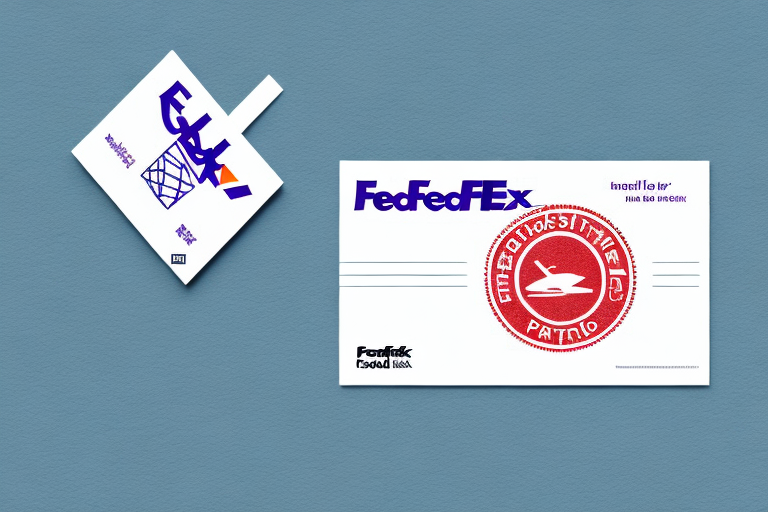Everything You Need to Know About USPS First-Class Mail
If you’re a business owner or just someone who frequently mails letters or packages, you’re likely familiar with USPS First-Class Mail. This type of mail is a cost-effective option for sending lightweight items up to 13 ounces, and it typically arrives at its destination within one to three business days. In this article, we’ll cover everything you need to know about USPS First-Class Mail, from how it works to tracking your delivery.
How USPS First-Class Mail Works
USPS First-Class Mail is a standardized way to send letters, postcards, and lightweight packages within the United States. It’s a popular choice for businesses and individuals who want to send items quickly and affordably. To send First-Class Mail, you’ll need to adhere to specific size and weight restrictions, as well as follow certain preparation guidelines to ensure that your mail is processed efficiently.
One of the benefits of using USPS First-Class Mail is that it includes delivery confirmation at no extra cost. This means that you can track your mail and receive notifications when it has been delivered to its destination. Additionally, First-Class Mail is typically delivered within 1-3 business days, making it a reliable option for time-sensitive mailings. However, it’s important to note that delivery times may vary depending on the destination and time of year, such as during peak holiday seasons.
Understanding the Different Types of USPS First-Class Mail
There are several different types of USPS First-Class Mail, including letters, postcards, large envelopes (flats), and small packages. Each type has specific size and weight requirements, and postage rates vary depending on the size and weight of the item being mailed. Understanding the different types of First-Class Mail can help you choose the best option for your needs.
It’s important to note that USPS First-Class Mail also offers delivery confirmation and tracking services for an additional fee. This can be especially useful for businesses or individuals who need to ensure that their mail has been delivered to its intended recipient. Additionally, First-Class Mail is typically delivered within 1-3 business days, making it a reliable and efficient option for sending important documents or packages.
The Benefits of Using USPS First-Class Mail for Your Business
For business owners, USPS First-Class Mail can be a great way to send customer invoices, marketing materials, and other important documents. It’s a cost-effective option that still offers reliable delivery times, which can be especially beneficial for small businesses on a tight budget.
In addition to being cost-effective and reliable, USPS First-Class Mail also offers a variety of tracking options. This means that business owners can easily track their packages and ensure that they are delivered on time. This can be especially important for businesses that rely on timely deliveries to maintain customer satisfaction.
Another benefit of using USPS First-Class Mail is that it offers a range of delivery options, including delivery to PO boxes and military addresses. This can be particularly useful for businesses that need to send packages to customers or clients who may not have a physical address.
How to Prepare Your First-Class Mail for Mailing
Before you send your First-Class Mail, it’s important to make sure it’s properly prepared to ensure efficient processing and accurate delivery. This includes addressing the envelope or package correctly, affixing the appropriate postage, and properly sealing the item. You may also need to include additional documentation, such as a customs form for international shipments.
Another important aspect of preparing your First-Class Mail is to ensure that the contents of your package or envelope are not prohibited by the United States Postal Service. This includes items such as hazardous materials, firearms, and certain types of perishable goods. It’s important to check the USPS website for a full list of prohibited items before sending your mail.
Additionally, if you’re sending a valuable item, it’s recommended to purchase insurance for your package or envelope. This will provide protection in case your mail is lost or damaged during transit. You can purchase insurance at the post office or online when you print your shipping label.
How to Calculate Postage for First-Class Mail
Calculating postage for First-Class Mail can be tricky, especially if you’re sending a package that falls outside the standard size and weight guidelines. Fortunately, there are several online tools available to help you calculate your postage rate. You’ll need to know the weight of your item, its dimensions, and the destination zip code to determine the correct postage rate.
It’s important to note that First-Class Mail is typically delivered within 1-3 business days, depending on the distance between the sender and recipient. However, delivery times are not guaranteed and can vary based on factors such as weather conditions and mail volume.
If you’re sending important or time-sensitive documents or items, it may be worth considering additional services such as Priority Mail or Priority Mail Express, which offer faster delivery times and additional tracking and insurance options. Keep in mind that these services may come with higher postage rates, so be sure to weigh the cost versus the benefits before making a decision.
Tips for Saving Money on First-Class Mail Postage
If you’re looking to save money on First-Class Mail postage, there are several strategies you can use. One is to take advantage of USPS discounts, such as those offered to businesses that send a large volume of mail. You can also reduce your postage costs by optimizing your packaging to minimize weight and size, or by using USPS’s online shipping tools.
Another way to save money on First-Class Mail postage is to consider alternative mailing options. For example, USPS offers a variety of flat-rate shipping options that can be more cost-effective for heavier or larger items. Additionally, you may want to explore other shipping carriers, such as FedEx or UPS, to compare rates and find the best deal for your specific needs.
Tracking Your First-Class Mail Delivery
Tracking your First-Class Mail delivery can help you stay informed on when your mail is expected to arrive, and can give you peace of mind knowing that your package or letter has been delivered. USPS offers several tracking options, including online tracking and text or email alerts.
It is important to note that not all First-Class Mail is eligible for tracking. For example, letters and postcards sent at the standard First-Class Mail rate cannot be tracked. However, packages and larger envelopes sent at the First-Class Mail rate are eligible for tracking. Additionally, USPS offers services such as Certified Mail and Registered Mail, which provide additional tracking and security features for important or valuable mail.
Understanding USPS First-Class Mail Delivery Times and Expectations
USPS First-Class Mail delivery times vary depending on the distance between the sender and recipient, as well as any delays caused by weather, holidays, or other factors. Typically, First-Class Mail arrives within one to three business days, though this is not guaranteed.
It is important to note that USPS First-Class Mail does not come with tracking information. If you need to track your package or letter, you will need to upgrade to a different shipping option, such as Priority Mail or Priority Mail Express. Additionally, First-Class Mail is limited to a maximum weight of 13 ounces. If your package exceeds this weight limit, you will need to use a different shipping option.
Common Issues with USPS First-Class Mail Delivery and How to Resolve Them
Despite USPS’s efforts to ensure reliable delivery, sometimes issues can arise. Common problems with First-Class Mail delivery include lost or delayed packages, incorrect delivery addresses, and damaged items. If you experience issues with your delivery, there are several steps you can take to resolve the problem, including contacting USPS customer service or filing a claim.
Another common issue with USPS First-Class Mail delivery is misdelivered mail. This can happen when the mail carrier accidentally delivers a package or letter to the wrong address. If you receive someone else’s mail, it’s important to return it to the correct address as soon as possible. You can either drop it off at the correct address or put it back in the mailbox with a note indicating the correct address. If you continue to receive misdelivered mail, you can contact USPS customer service to report the issue and request a solution.
Comparing USPS First-Class Mail to Other Shipping Options
While USPS First-Class Mail can be a great option for many businesses and individuals, it’s not always the best choice for every situation. Depending on your shipping needs, you may want to consider other options such as USPS Priority Mail, UPS, or FedEx. Each of these services has its own advantages and disadvantages, so it’s important to choose the option that best meets your specific needs.
USPS Priority Mail is a faster shipping option than First-Class Mail, with delivery times ranging from 1-3 business days. This service also includes free tracking and insurance up to $50. However, it can be more expensive than First-Class Mail, especially for larger packages.
If you need guaranteed delivery by a specific date, UPS and FedEx offer expedited shipping options such as Next Day Air and 2nd Day Air. These services can be more expensive than USPS options, but they provide reliable and fast delivery for time-sensitive packages. Additionally, UPS and FedEx offer more advanced tracking and delivery notifications than USPS.
Conclusion
USPS First-Class Mail can be a reliable and cost-effective option for sending lightweight letters and packages within the United States. By understanding how this service works and how to properly prepare your mail for delivery, you can ensure that your items arrive at their destination in a timely and efficient manner. While issues can sometimes arise, USPS offers several tracking and customer service options to help resolve any problems that may occur. By weighing your options and choosing the shipping method that best suits your needs, you can ensure that your mailings are successful and hassle-free.
It is important to note that USPS First-Class Mail has weight and size restrictions. Packages must weigh less than 13 ounces and measure less than 15 inches in length, 12 inches in width, and 3/4 inch in thickness. If your package exceeds these limits, you may need to consider other shipping options such as USPS Priority Mail or USPS Priority Mail Express.
Additionally, USPS First-Class Mail does not offer guaranteed delivery times. While most items are delivered within 1-3 business days, delivery times can vary depending on the destination and time of year. If you need your package to arrive by a specific date, it is recommended to use a guaranteed delivery service such as USPS Priority Mail Express.






















